Tuesday Congress Gazette
Roving Reporter: So: You Are Managing a Sleep Center
Karen Y. Allen, CRT, RPSGT
Glenn Roldan, RPSGT, delivered a great presentation on Monday about sleep lab management and how to become a better manager.
According to Roldan, sleep technologists performing nighttime polysomnograms appreciate a considerate and thoughtful leader who provides feedback on their work in a timely, constructive manner. If the manager rarely communicates with the night staff on a regular basis, they can get the impression that their manager isn’t interested in the staff, avoids talking with them, assigns patients without consideration of the complications that come with the patients, and only communicates with the night staff to criticize their work. Leading by example, delegating tasks, and sharing observations—positive and negative—with open and honest communication on a regular basis improves staff performance and respect for the manager.
Access to the Policy and Procedure Manual should be available in the control room. Policies should include those pertaining to diagnostic, split-night, CPAP and/or Bi-Level polysomnograms, and the MSLT/MWT procedures. Internal, external, and medical emergency policies and procedures should also be included.
Specific job descriptions should be created for each staff position, such as the receptionist, nighttime tech, daytime tech, scoring tech, and even the medical director. When interviewing potential techs, do a background check and ask specific sleep-related questions. Include the staff when interviewing the potential candidate. Have monthly staff meetings that include agenda items presented by the staff prior to the meeting. Schedule staff meetings for the early evening, in accordance with the nightshift schedule. Work as a team. We’re all team players and not just team leaders. There’s no “I” in “team”.
PHS Includes RRTs with Bachelor’s Degrees in Therapist Category
The AARC marked a major milestone last fall, when the U.S. Public Health Service (PHS) officially announced that registered respiratory therapists with bachelor’s degrees would be eligible for service under its Therapist Category. The move effectively means these therapists may now become commissioned officers in the PHS.
The decision is the result of years of networking between the AARC and the PHS and represents a leveling of the playing field between RTs and other professionals in the Therapist Category. “The move by the PHS to include these therapists in the Commissioned Corps is a major victory,” says AARC Director of Government Affairs Cheryl West, MHA. “We are now in the same category as audiology, occupational therapy, physical therapy, and speech language pathology.”
Get the Recognition You Deserve
You’ve been reading all about the American Respiratory Care Foundation honors and awards that were presented to members of our profession during the Congress. Want to join them? Visit the Foundation web site to learn more about the ARCF awards programs and how you can apply to receive one of these special honors.
Roving Reporter: The 23rd Annual New Horizons Symposium - Pulmonary Rehabilitation 2007
Debbie Koehl, RRT
The AARC’s New Horizon Symposium brought some of the best experts in pulmonary rehabilitation to the meeting this year. Whether attendees were new to the pulmonary rehab field or experienced therapists, there was information for everyone.
Dr. Neil McIntyre kicked off the symposium with a review of lung dysfunction. In other words, why our COPD patients breathe the way they do. Drs. Richard Casaburi and Richard ZuWallack discussed the how-to’s of exercise and how we can use pharmacology, oxygen, and perhaps some non-traditional means to pre-treat and exercise patients. We got a great review of bronchodilator and steroid therapy in the process!
Dr. Carolyn Rochester provided a great overview of why we should use pulmonary rehabilitation in our LVRS and lung transplant patients. She confirmed that rehab does work with these patients.
Dr. Barry Make challenged us to look at our pulmonary rehabilitation programs as perhaps disease management programs. He compared and contrasted the similarities and differences between the two. Finally, Dr. Charles Emery helped us “look into the heads” of our patients to see how neuropsychiatric issues affect people with lung disease.
The AARC provided pulmonary rehabilitation clinicians with some great programs during the symposium. These speakers and their topics challenged people who are new to rehab to seek more information; and for us “old timers,” they invigorated our minds and encouraged us to keep the faith and continue to rehab our patients.
New Legislation Seeks to Expand Access to Qualified RTs
Expanding access to qualified respiratory therapists in settings outside of the acute care hospital is the goal of H.R. 3968—the Respiratory Therapy Initiative. The bill was introduced into the U.S. House of Representatives by Congressman Mike Ross (D-AR) last fall, and the AARC is actively seeking co-sponsors for the bill in the House and introduction of a companion bill in the Senate.
You can learn much more about this important legislation and how it can benefit your patients and your profession on the AARC web site.
Specialty Sections Deliver Targeted Networking
Are you a member of one or more of the AARC’s Specialty Sections? If not, you’ll want to check out these practice-specific groups within the Association to find the ones that match your areas of interest. Why? They offer great networking opportunities with like-minded peers, plus dedicated e-mail lists where you can exchange ideas and get answers to your questions on a real-time basis.
The sections also publish monthly e-News newsletters full of the latest research pertaining to the practice area, and quarterly Bulletins with articles of interest written by and for section members. The sections host meetings during the AARC Congress as well, and they always play a key role in proposing topics and speakers for the next year’s conference.
Roving Reporter: “Yikes”! The Accreditation Group is Coming”
Karen Y. Allen, CRT, RPSGT
The decision to apply for American Academy of Sleep Medicine (AASM) accreditation is a positive choice that helps your sleep lab become more complete and organized, reported Glenn Roldan, RPSGT, in a talk yesterday afternoon. But application for full accreditation must be completed and submitted within 12 months from the date of purchase, and it’s a complicated process that requires quite a bit of information in the self assessment for Standards for Accreditation of Sleep Disorders Centers or Laboratories for Sleep Related Breathing Disorders.
The standards require a copy of the medical director’s current medical license, valid in the state of the program and with an expiration date; and copies of each technologist’s RPSGT certificate or detailed information on training in polysomnography for each non-registered sleep tech. A copy of valid CPR training certification cards must also be submitted.
A detailed copy of the floor plan of your facility showing room dimensions with handicap accessible bedroom and bathroom must be included in the application as well. Signed and dated quality assurance reports that include the quarterly report of inter-scorer reliability and at least three other QA indicators must also be submitted for review, as must the sleep lab’s quality assurance policy and inter-scorer reliability policy.
The sleep program must maintain an identity as a unified center. This requires separate phone lines, stationery letterhead, advertising materials such as sleep program brochures, and the ability to demonstrate a commitment to the program. The Policy and Procedure Manual must have detailed medical emergency policies and procedures and patient acceptance policies. Protocols for each procedure performed by the program, including nocturnal polysomnography in adults and children, must be in accordance with current AASM practice parameters.
De-identified case samples submitted must include the original note from consultation with one of the sleep specialists, results of sleep studies, and one office follow up note advising the patient of the results of the study and a treatment plan. A complete case presentation with a different diagnosis must be submitted as well. Staff must be appropriately trained and supervised.
The AASM has facility and equipment standards referring to patient testing rooms, the control room, patient communication and testing, policies and procedures, data acquisition, record scoring, patient evaluation, charting, and emergency procedures. Education of the staff must include 10 hours in sleep related education
When the site visitors have completed their evaluation and interviews, they may determine that the sleep facility meets and/or exceeds the standards and is granted full accreditation, or they may decide there are standards that haven’t been met and a provisional accreditation may be granted by the AASM board of directors. An application for full accreditation must be submitted within 6 months of the date provisional accreditation was granted; otherwise, provisional accreditation is withdrawn and the facility must purchase a new application.
What Is an “FAARC”?
Every year at the Congress, the AARC honors a new group of respiratory professionals with the “FAARC”—Fellow of the American Association for Respiratory Care.
What does it take to become an FAARC? The people in this illustrious group have demonstrated excellence in some area of the profession—ranging from management to education to research to public service and more. Nominations for 2008 FAARC designates will open back up soon, so consider nominating a worthy peer for this important group.
Covidien Sputum Bowl Winners
The 30th Annual Covidien Sputum Bowl® pitted the top four teams in both the National and Students division in final playoffs Monday night, and the winners are:
National Division
First Place: Virginia
Second Place: Michigan
Third Place Tie: Maryland/DC and Pennsylvania
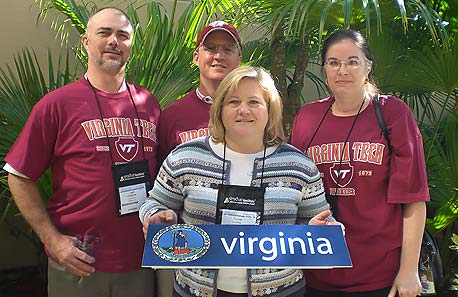

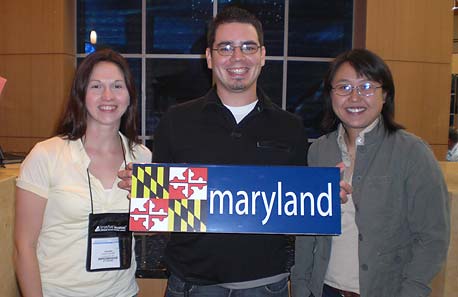
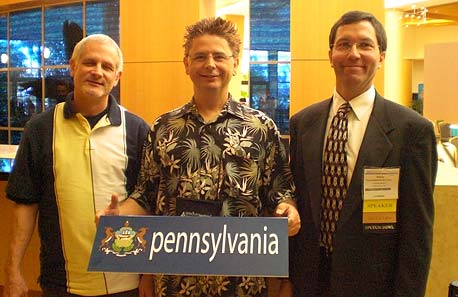
Students Division
First Place: Missouri
Second Place: Arizona
Third Place Tie: Colorado and Louisiana
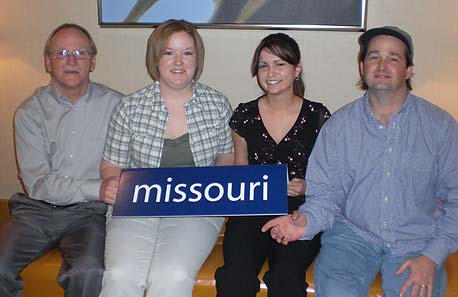
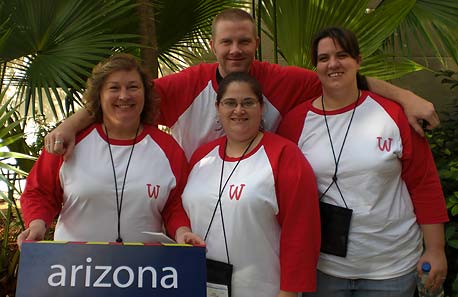
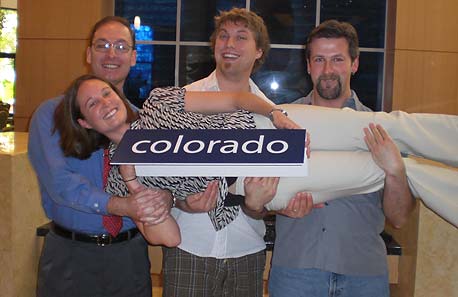

“I was voted in as the Respiratory Therapist of the Year at UCMC, so I opted to come see all the educational talks.“
